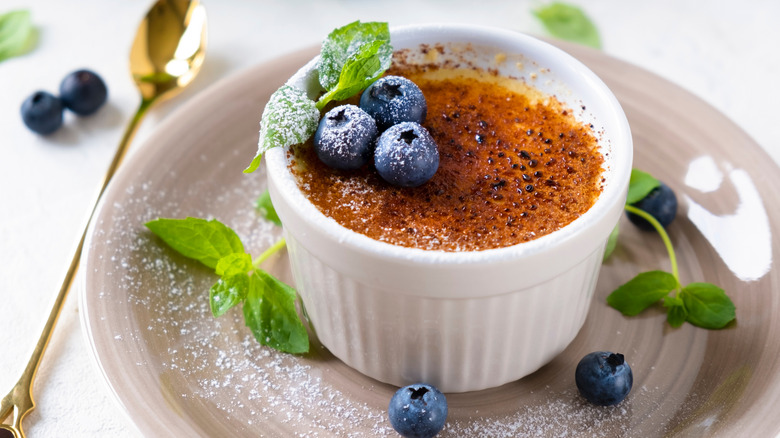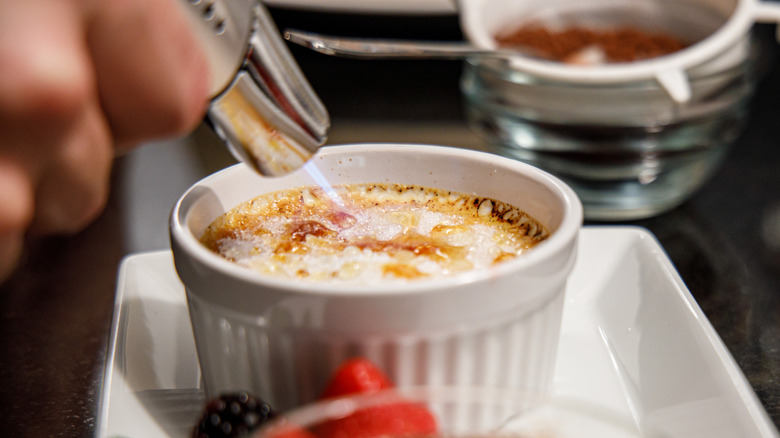The Best Type Of Sugar For Topping Crème Brûlée
If you've ever sampled crème brûlée, then you know how delicious this rich, creamy dessert can be. A cream and egg yolk custard that's typically infused with vanilla bean or other flavorings before being poured into ramekins, crème brûlée is then baked, often in a water bath, until just set. After being chilled, the puddings are topped with a thick layer of sugar that's caramelized with a blow torch or the oven's broiler setting, resulting in a crispy disk of sugar that contrasts beautifully with the smooth custard below it.
Although crème brûlée is often thought of as French — its name, after all, translates to "burnt cream" from that language — the dessert's origins are actually tricky to trace, according to Taste Atlas. Spain and England also lay claim to the dish, which goes by crema Catalana and burnt cream, respectively. But wherever the dessert was first whisked together, it's still a popular one today — and although it sounds fancy, crème brûlée isn't that hard to prepare at home.
If you're curious and want to make some, you'll want to grab heavy cream, eggs, vanilla, and sugar on your next grocery trip — and you'll want to make sure that sweetener is the correct kind for the fabulous crème brûlée topping.
Plain old white sugar is the best choice for crème brûlée
If you check out recipes for crème brûlée, you'll likely encounter quite a few that call for turbinado sugar, a type of unprocessed sugar that has larger crystals, a darker color, and a deeper, more pronounced flavor (via SF Gate). And while it would seem to make sense to use a more complex-tasting sugar in a dessert in which the sweetener plays a starring role, regular white granulated sugar is actually the best choice for crème brûlée, according to Bon Appétit. As the outlet explains, white sugar's small crystals easily melt under the heat of a blowtorch, meaning they'll caramelize quickly and leave the custard underneath nice and cool.
Plus, caramelizing white sugar is easier due to the visual cues it provides, Bon Appétit writes. Raw sugar is already brown, so it can be difficult to tell when it has caramelized sufficiently as you torch it. That might lead to over-torching, which could burn the sugar and even melt the custard below it. White sugar, on the other hand, turns golden brown when it's caramelized, and it's a lot easier to see when it goes too dark and has burned.
Foods Guy also agrees that granulated sugar is the best choice, stating that overly coarse sweeteners can have negative impact on the dessert as a whole.

